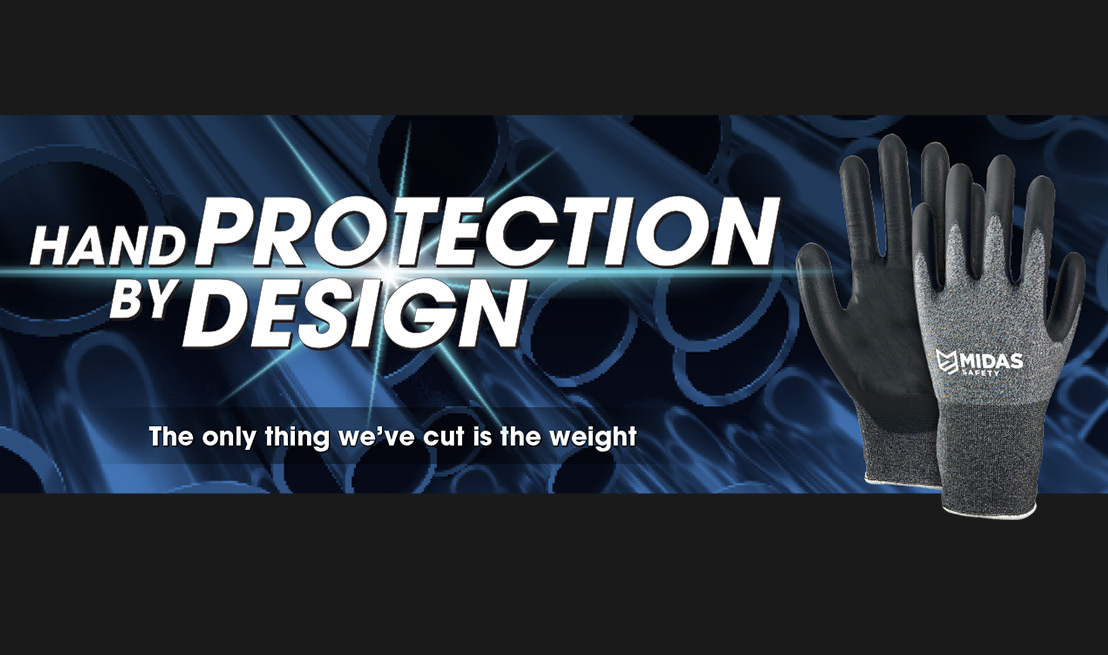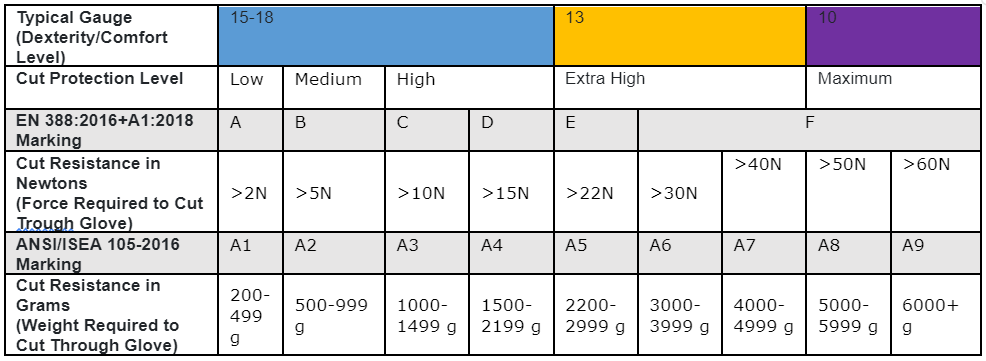How to Select Cut-Resistant Gloves without Compromising on Dexterity and Comfort

Cut-resistant gloves are often the last line of defence against hand injuries in many manufacturing and warehousing environments where cuts, lacerations, and punctures are common risks. Yet, workers in these environments need more than just hand protection. Dexterity and comfort are equally critical to performing manual tasks safely while maintaining high productivity in sectors like metal and glass handling, automotive, and aerospace. Gloves that deliver the highest cut protection while significantly reducing thickness and weight may be the answer here.
Cut-related Hand Injuries Haven’t Gone Away
Cuts, lacerations, and punctures remain common workplace injuries globally. Over 400,000 European workers annually suffer injuries due to “contact with a sharp/pointed or rough/coarse agent” – the third most common cause of non-fatal workplace injuries1. Workers’ hands are particularly vulnerable to cut-related wounds.
The U.S. Bureau of Labor Statistics recorded 177,110 hand injuries due to cuts and lacerations, resulting in nearly 93,000 days away from work over the past two years2.
To help address this industry-wide concern, standardization bodies in Europe and North America have introduced more stringent requirements for cut-protective gloves.
EN 388 and ANSI 105: High Standards for High Risks
EN 388:2016+A1:2018 and ANSI/ISEA 105-2016 standards set minimum requirements for cut-resistant gloves sold in Europe and North America, respectively. These standards are also adopted in other regions.
According to EN 388 and ANSI 105 standards, gloves must display, in their marking, the cut protection level, abrasion, tear, puncture, and impact resistance performance. Both standards categorize cut protection according to the force or weight required to cut through the glove – the greater the force, the greater the protection level.
Cut Protection Level vs Dexterity
A glove’s “gauge” is essentially a measurement of its thickness – the lower the gauge, the thicker the glove. A thicker glove generally provides greater cut resistance but poorer dexterity and comfort. This hand protection is typically suitable for situations where the risk of suffering cut injuries is high, tasks are relatively short, and don’t require high precision. By contrast, higher-gauge gloves are lighter and enable higher dexterity. This hand protection is generally more suited for workplaces where cut risk may be lower, but workers need to wear hand protection for longer and require high accuracy. Table 1 illustrates the typical gauges of gloves in relation to cut resistance levels according to EN 388 and ANSI 105.

So far, so good. Yet, selecting the appropriate gloves isn’t always as straightforward as it may seem. There are applications where high cut protection, dexterity, and comfort must all go hand in hand. For example, manual tasks in industries like metal and glass fabrication, such as window manufacturing, aerospace, automotive, and domestic appliance manufacturing require high precision while facing a high cut risk. In addition, maximizing comfort and minimizing fatigue is critical to enabling workers in these sectors to perform tasks accurately and safely. Research shows that fatigue can affect productivity3 and quality and is a factor in more than 1 in 10 workplace accidents.4 This is where the new W74 Tungsten technology comes in to help.
Going Beyond Binary Choices
Selecting cut-protective gloves shouldn’t be about binary choices between worker safety and comfort or between protection and dexterity. Midas Safety has developed a new glove technology that provides the highest cut resistance despite being extremely thin and light. This significant advancement in hand protection, named W74 Tungsten, has been enabled by Midas Safety’s research and development (R&D) capabilities combined with state-of-the-art knitting machines from Shima Seiki, Japan. The W74 Tungsten range is developed by spinning tungsten into the yarn to offer extremely lightweight gloves with high levels of cut protection.
The W74 Tungsten glove range is available in 21 gauge and 18 gauge, making it one of the thinnest on the market. In addition, these gloves are roughly half the weight of equivalent products featuring similar cut protection levels. This way, the W74 gloves minimize hand fatigue while maximizing dexterity – contributing to higher accuracy and productivity.
Despite being thin and light, the W74 gloves meet the highest cut resistance requirements according to EN 388:2016 standard (level F) and ANSI/ISEA 105-16 standard (level A7-A9).
Workers performing manual tasks across manufacturing, warehousing, and logistics can now count on optimal comfort and dexterity combined with maximum cut protection. Wearing hand protection that combines optimal safety and comfort can help reduce fatigue, leading to higher productivity and safety.
To learn more about the W74 Tungsten 21gg and 18gg cut protection range visit https://explore.midassafety.com/w74-21gg-fa7
1 https://ec.europa.eu/eurostat/statistics-explained/index.php?title=Accidents_at_work_-_statistics_on_causes_and_circumstances#Cause_of_accident
2 https://www.bls.gov/iif/nonfatal-injuries-and-illnesses-tables.htm#summary
3 https://www.openaccessgovernment.org/tiredness-and-fatigue/52006/
4 https://www.nsc.org/workplace/safety-topics/fatigue/fatigue-reports#:~:text=Research%20shows%2013%25%20of%20workplace,for%20fatigue%20management%20and%20mitigation